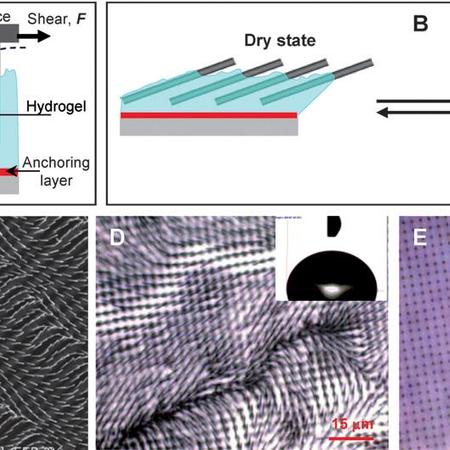Reversible Switching of Surface Wettability
As exemplified by the water-repellent surfaces of lotus leaves, rose petals, water striders’ legs, and cicadas’ wings, arrays of nanobristles can keep materials dry by acting as a shield that prevents water from infiltrating past the bristles’ tips. Based on this strategy, we have designed materials that dynamically switch between superhydrophobic and hydrophilic states purely by changing the orientation of nanobristle arrays: the surface is superhydrophobic when the bristles are upright and the tips are exposed, and hydrophilic when the tips are hidden. To drive this switch, we use the approach recently developed for our gel-actuated hybrid architectures; we embed the nanobristles in a layer of hydrogel that swells in response to water or humidity. The versatility of the hybrid system enables us to construct two variations, one in which the material attracts water in a wet or humid atmosphere but repels it at other times, and another in which the material repels water under wet conditions and attracts it when water is low. The difference is simply a matter of how the bristles are attached to the surface.
For the first case, stiff silicon bristles anchored to the base remain standing and become hidden by the swelling gel, while in the second case the bristles are suspended in the gel such that the contracted gel keeps them lying down and swelling stands them up and exposes their tips.
Our more recent development of nanostructure arrays with different bending moduli and shapes and of gels that respond to a variety of stimuli are enabling us to take this strategy in a wide range of directions.

